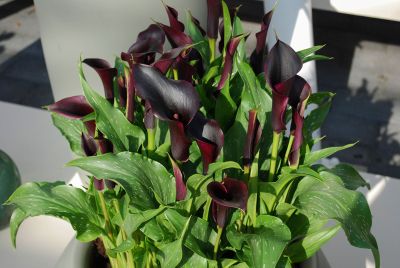Why Use Darker Colors in the Garden?
Dark colors definitely have their place in the garden. They can be used to highlight plants or other garden features that are lighter in color, for instance. Darker tones provide contrast and visual interest. They add drama to an outdoor space.
Gardening with Dark Colors
Depending on how and where you use them, darker colors in the garden can be striking and attractive. Using dark colors can also be tricky and may not have the effect you were hoping to achieve. Here are some tips for success:
Avoid putting darker plants in shady spots. They’ll blend in and be difficult to see. Choose full sun locations.
Use larger dark plants, like shrubs, as a backdrop for lighter, brighter plants.
Choose plants with purple foliage for dark contrast in a mixed bed.
Variegated foliage looks more striking next to dark plants, where they can stand out.
Use dark plants to make white flowers pop, especially in the light of the mood when the dark plants will nearly disappear.
Don’t limit dark colors to plants. Use dark walls, fences, pergolas, and even exterior paint colors to make your garden the bright focal point.
Dark Plants for the Garden
Here are some choices for plants to get you started on a dark-themed garden. These plants have dark purple to black flowers:
Tulip – ‘Queen of Night’
Hollyhock – ‘Nigra’
Hellebore – ‘Onyx Odyssey’
Viola – ‘Molly Sanderson’
Rose – ‘Black Baccara’
Dahlia – ‘Arabian Night’
Petunia – ‘Black Velvet’
Calla Lily – ‘Black Forest’
If you want to incorporate some dark foliage, try:
Ninebark – ‘Diabolo’
Weigela – ‘Wine and Roses’
Black Mondo Grass
Colocasia – ‘Black Magic’
Coleus – ‘Black Prince’
Coral Bells – Obsidian
Amaranthus (several varieties)
Ornamental Pepper – ‘Black Pearl’
Ornamental Millet – ‘Purple Majesty’
Bugleweed – ‘Black Scallop’
